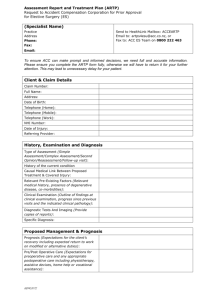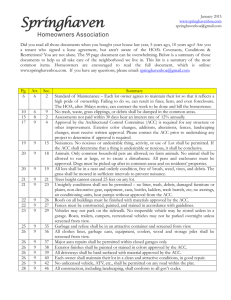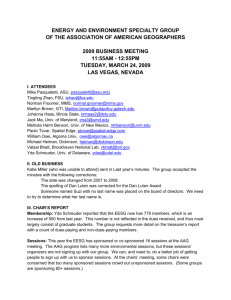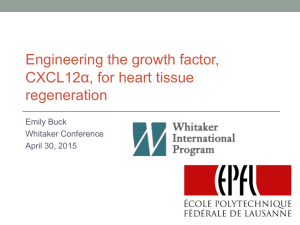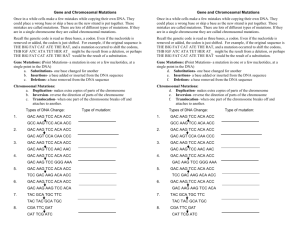Figure S1 Protein composition of AL
advertisement
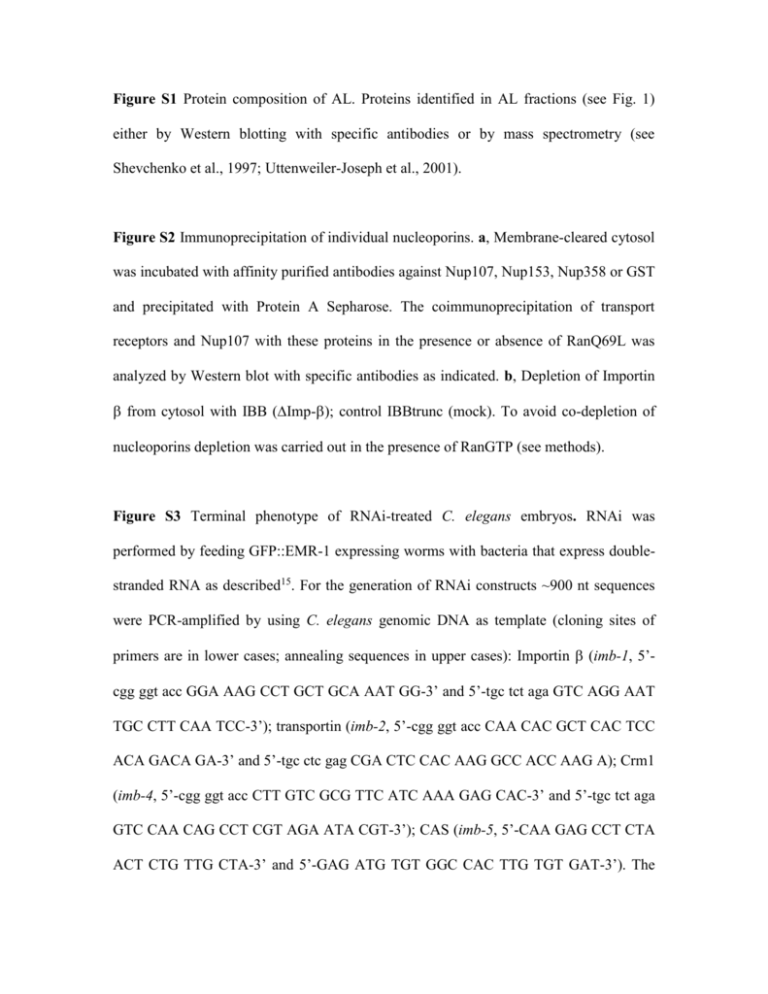
Figure S1 Protein composition of AL. Proteins identified in AL fractions (see Fig. 1) either by Western blotting with specific antibodies or by mass spectrometry (see Shevchenko et al., 1997; Uttenweiler-Joseph et al., 2001). Figure S2 Immunoprecipitation of individual nucleoporins. a, Membrane-cleared cytosol was incubated with affinity purified antibodies against Nup107, Nup153, Nup358 or GST and precipitated with Protein A Sepharose. The coimmunoprecipitation of transport receptors and Nup107 with these proteins in the presence or absence of RanQ69L was analyzed by Western blot with specific antibodies as indicated. b, Depletion of Importin from cytosol with IBB (∆Imp-; control IBBtrunc (mock). To avoid co-depletion of nucleoporins depletion was carried out in the presence of RanGTP (see methods). Figure S3 Terminal phenotype of RNAi-treated C. elegans embryos. RNAi was performed by feeding GFP::EMR-1 expressing worms with bacteria that express doublestranded RNA as described15. For the generation of RNAi constructs ~900 nt sequences were PCR-amplified by using C. elegans genomic DNA as template (cloning sites of primers are in lower cases; annealing sequences in upper cases): Importin (imb-1, 5’cgg ggt acc GGA AAG CCT GCT GCA AAT GG-3’ and 5’-tgc tct aga GTC AGG AAT TGC CTT CAA TCC-3’); transportin (imb-2, 5’-cgg ggt acc CAA CAC GCT CAC TCC ACA GACA GA-3’ and 5’-tgc ctc gag CGA CTC CAC AAG GCC ACC AAG A); Crm1 (imb-4, 5’-cgg ggt acc CTT GTC GCG TTC ATC AAA GAG CAC-3’ and 5’-tgc tct aga GTC CAA CAG CCT CGT AGA ATA CGT-3’); CAS (imb-5, 5’-CAA GAG CCT CTA ACT CTG TTG CTA-3’ and 5’-GAG ATG TGT GGC CAC TTG TGT GAT-3’). The DNA fragments were inserted into pPD129.3630. The empty pPD129.36 vector was used as a negative control. At the stages shown, all the embryos except for the wild-type controls are completely disorganized. Scale bar 10 m. References (Supplementary figures) Uttenweiler-Joseph, S., Neubauer, G., Christoforidis, S., Zerial, M. & Wilm, M. Automated de novo sequencing of proteins using the differential scanning technique. Proteomics 5, 668-682 (2001). Shevchenko, A., Chernushevich, I., Ens, W., Standing, K. G., Thomson, B., Wilm, M. & Mann, M. Rapid 'de novo' peptide sequencing by a combination of nanoelectrospray, isotopic labeling and a quadrupole/time-of-flight mass spectrometer. Rapid Commun. Mass Spectrom. 11, 1015-1024 (1997).




